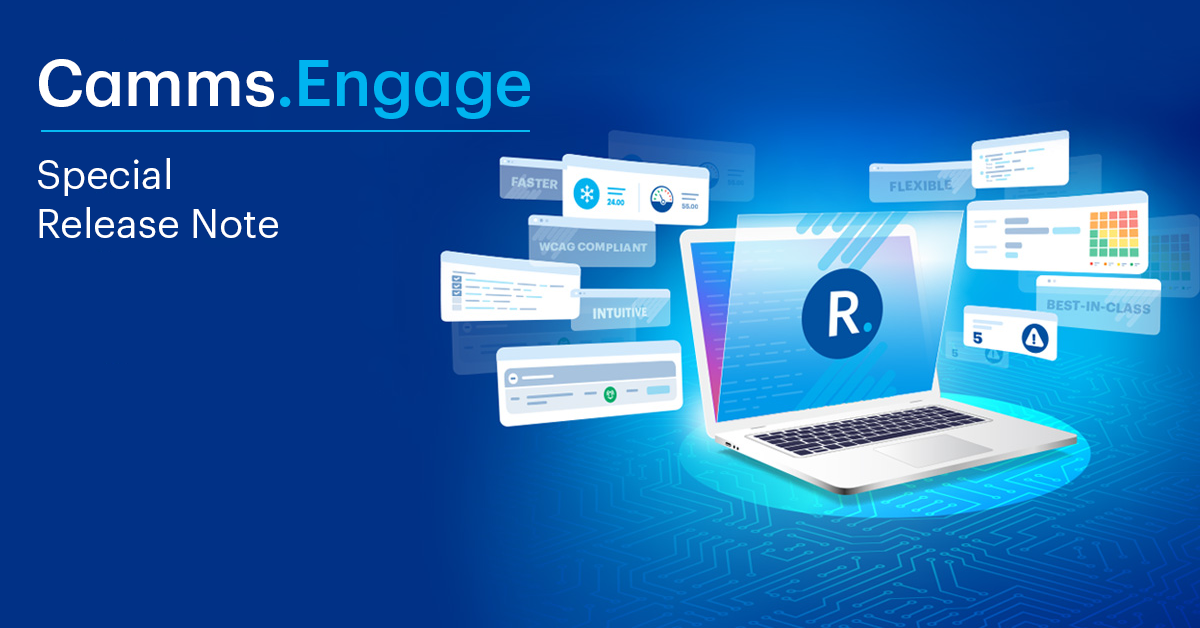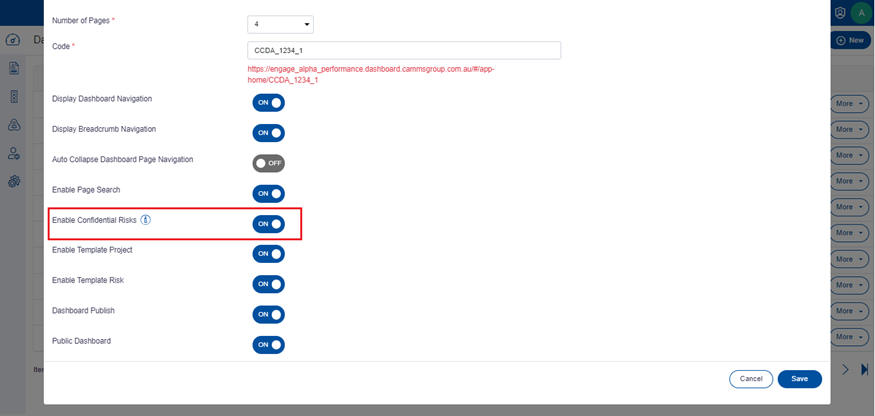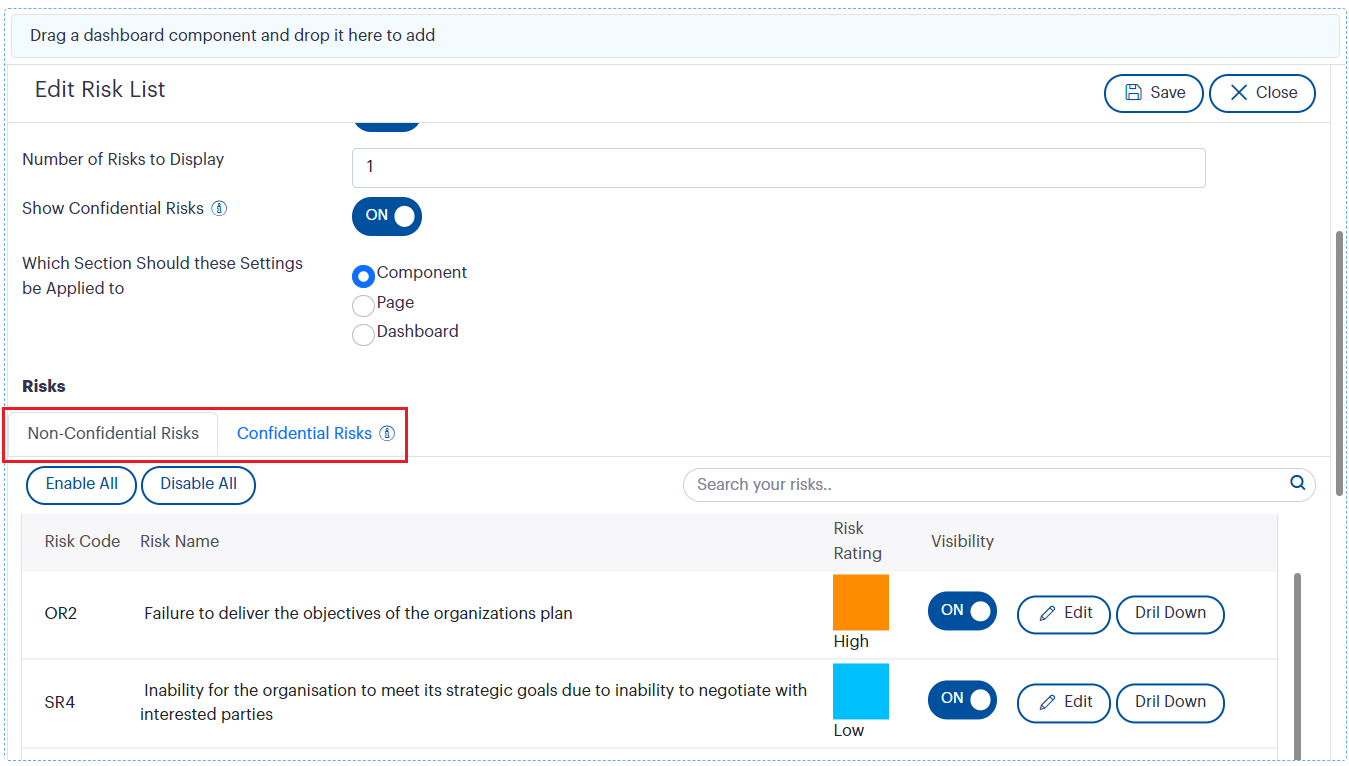
Camms is pleased to bring you the latest feature enhancements of Camms.Risk Evolved, integrated within Camms.Engage. These updates offer complete transparency and precise information.
By implementing these upgrades, performance will be enhanced, and the user interface and overall experience within the application will be improved. You will have access to the latest functionality, empowering you to effectively manage your Dashboards with ease.
Table of Content
- What's new?
- Enhancements implemented in Camms.Engage Dashboards for Camms.Risks Confidential changes.
- Enhancements implemented in Camms.Engage Dashboards for Camms.Risks Approval changes.
- Introducing an option to apply settings in component, page, and Dashboard levels.
What's new?
- Provided with the ability to view and configure Dashboards which capture and showcase Confidential Risks according to the permissions enabled to the logged-in user.
- Enabled to view risks compatible with Camms.Risk Approval enhancements through Risk components within Camms.Engage Dashboards.
- Allowed to apply settings to a component, page, or the entire Dashboard by utilizing just one single setting.
- Enriched user experience on certain features, components, and pages of Camms.Engage Dashboards.
Enhancements implemented in Camms.Engage Dashboards for Camms.Risks Confidential changes.
- This enhancement would enable Administrators to configure components including the Dashboard Summary, Hierarchy Summary and Risk excluding the Risk Detail component, in a way that would capture and showcase Confidential Risks through Camms.Engage.
- As an Administrator, you would be able to showcase the Confidential Risks through Camms.Engage Dashboards, by turning ON the “Enable Confidential Risk” toggle button in the Dashboard edit section.

Figure 1: Enable Confidential Risks toggle button.
- Upon turning ON the “Enable Confidential Risk” toggle button in the Dashboard edit section, you would be able to view the “Show Confidential Risks” toggle button in the Risk components excluding the Risk Detail component to display the Confidential Risks that are visible to you.

Figure 2: Show Confidential Risks toggle button.
- Once you enable this toggle button, you would be able to see two separate tabs called Non-Confidential Risks and Confidential Risks at the bottom of the component edit section where you will be able to enable the visibility of the Risks.

- As per our usual Camms.Engage behaviour, you would see two buttons as “Enable All” and “Disable All” in the tab. Once you click on the Enable All button, it would turn ON the visibility of all Confidential Risks captured by this component. All Confidential Risks would then be displayed in the Dashboard based on the permissions assigned to the logged-in user.
- As you might not have permission to view all risks including the Confidential and the Non-Confidential Risks, we have provided an info message in the Confidential Risks tab, where you could get an idea of the enabled Risk count and the disabled Risk count with the total number of Confidential Risks captured by a particular component.
Note: In the front end as a logged-in user, you would be able to view the Confidential Risks according to the Confidentiality view permissions assigned to you. If you’re not logged into the Camms.Engage, you would not be able to view any Confidential Risks.Enhancements implemented in Camms.Engage Dashboards for Camms.Risks Approval changes.
- We have introduced a set of new functions on several pages, that will enhance your experience when using the Risk components available in Camms.Engage application .
- The Risk components would display the Risks that are in Open or Approved status to provide more organized information to your stakeholders.
- The following components would reflect the captured Open and Approved risks in Camms.Engage Dashboards
- Risk List
- Risk Node
- Interactive Risk Heatmap
- Risk Profile Summary
- Dashboard Summary
- Hierarchy Summary
Note: Risk Profile Summary, Dashboard Summary and Hierarchy Summary components would only include the summaries calculated based on the Open or Approved Risks that have been captured by the component.Introducing an option to apply settings in component, page, and Dashboard levels.
- As an Administrator, you would be able to apply the settings configured within a component, page or entire Dashboard to a particular section using the radio button selection option called “Which section should these settings be applied to”.

Figure 4: Which section should these settings be applied to
- This radio button selection option would be available in the following Risk components.
- Risk List
- Risk Node
- Interactive Risk Heatmap
- Risk Profile Summary
- The following table would explain the impact of the radio button selections.
| Option | Description |
|---|---|
| Component | If you select this option, the settings configured would be applied only to that particular component. |
| Page | If you select the page option, the settings configured would be applied to that particular component and all other similar components already configured within that page. Any new similar component added to that particular page will have the selected option as well as the settings configured, applied by default. |
| Dashboard | If this option is selected the settings configured would be applied to that particular component and also, all the other similar components already configured within that Dashboard. Any new similar component added to that particular Dashboard will have the selected option as well as the settings configured, applied by default. |
